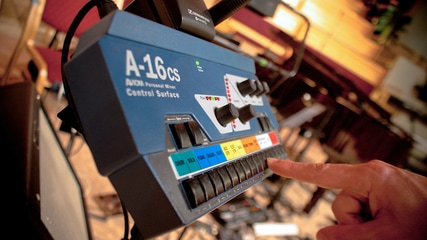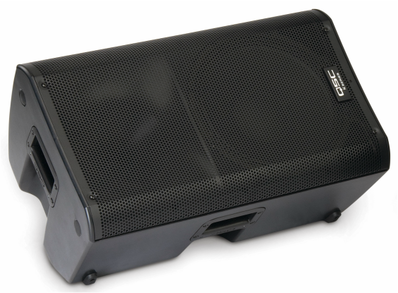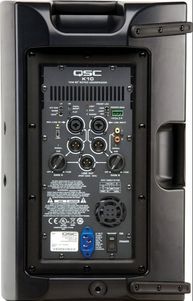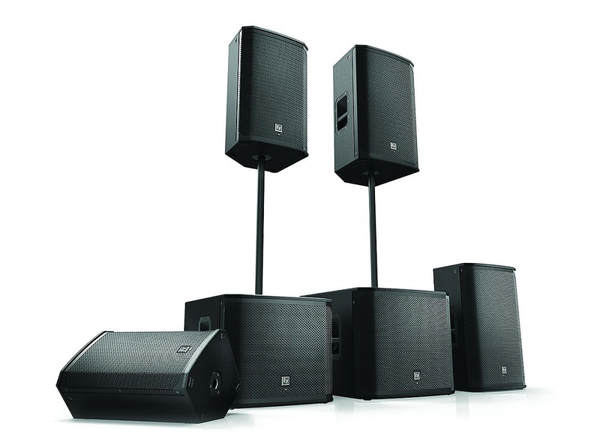Buying Guide - STAGE Monitoring Systems
There are a few different options when thinking about what to purchase for a monitoring system. Some of you may already have a system that you are just wanting to simply upgrade. On this page, we are going to be discussing the different options of what to buy when it comes to a stage monitoring system. Each church can be very different according to what it needs as far as a monitors. For some, in-ear are the way to go, whereas other churches would much rather use wedges. So, let's dive right in and discuss the best options out there.
In-Ear Monitoring Systems
In recent years, in-ear monitoring systems have really become a very popular method for stage monitoring in a church setting. Almost every major church and well known worship band uses in-ears on a consistent basis.
There are now numerous manufacturers of in-ear systems, but my favorite would have to be the tried and true Aviom. I am a worship leader for a medium sized church, and time after time, this system has provided excellent performance and reliability for our team. They are not cheap, but the amount of issues we were having that were solved seemingly overnight, was well worth the investment. If you are planning on purchasing an Aviom system, make sure you purchase the more expensive AN-16 input module (as shown directly below). This features an audio splitter so that the house engineer won't accidentally be changing volumes of the team's monitors mixes via the gain/trim knob mid-service via the mixing console. Basically the splitter splits the audio and separates the monitor side from the mixing console side. The gain, polarity, and other functions are still tweakable, but only directly from the input module unit itself - thus keeping each person's mix they choose solid.
There are now numerous manufacturers of in-ear systems, but my favorite would have to be the tried and true Aviom. I am a worship leader for a medium sized church, and time after time, this system has provided excellent performance and reliability for our team. They are not cheap, but the amount of issues we were having that were solved seemingly overnight, was well worth the investment. If you are planning on purchasing an Aviom system, make sure you purchase the more expensive AN-16 input module (as shown directly below). This features an audio splitter so that the house engineer won't accidentally be changing volumes of the team's monitors mixes via the gain/trim knob mid-service via the mixing console. Basically the splitter splits the audio and separates the monitor side from the mixing console side. The gain, polarity, and other functions are still tweakable, but only directly from the input module unit itself - thus keeping each person's mix they choose solid.
There are a plethora of options Aviom provides in regards to custom building your in-ear monitoring system to provide you the tools you need to cover your team effectively. Typically how in-ear monitoring works, is that you have a control unit for each musician (as pictured directly above). Each unit has 16 buttons that represent up to 16 instruments/voices where you can custom mix each instrument's/voice's volume, and it's place in the stereo image. Once you have your mix the way you like it, you can save that mix for the next time you come on stage. To bring up that mix, you can select "recall," press the number you saved it to, and the mix you like will load for use each time you are on stage. One of the most common complaints people have with in-ear monitoring, is that they say it sounds closed off, and that they cannot hear as much of the room anymore. The way my church (and most churches) handle this situation, is to have a pair of omnidirectional condenser microphones on each side of the stage panned hard left and right to capture the sound of the venue. These microphones only run through the Aviom system, and not the FOH mixing console. Another thing to consider when purchasing this type of system, is the data cable you need. My recommendation is Belden. They make some of the best and most reliable CAT-5e and CAT-6 cabling in the industry. Black Box is also a viable choice for cabling.
In-Ear Monitors
The two companies I am going to recommend for the actual in-ears are Westone and 1964. They both make really great sounding in-ears. You really need to prepare to purchase a higher quality set for you to maintain clarity and power in what you are hearing with in-ears. I have met people that have tried to go really cheap, and they ended up having ear fatigue, and/or just being frustrated all together. You really can't substitute iPod earphones, or a cheap set of headphones for what you really need. I have a friend that purchased a more economical brand after having used some Westones, and he admitted that the cheaper in-ears sounded muffled and dead comparatively. It's kind of like purchasing a Ferrari, but demanding that a Ford Pinto's engine be installed in it. Even if you have to purchase the cheaper set of UM2's from Westone, it'll be better than any department store specials by a LONG shot.
Budget Choice - The MEE Audio M6 Pro's are an excellent choice for in-ears if your budget is tight. While the Westone and 1964 options edge out the M6's in tone and build quality, I have found that they still sound very good for the price you pay. I have also used the budget Shure SE-215's (which are built tougher), but I actually preferred the sound of the M6's. This is all very subjective of course, and I would recommend trying out the different options in person to get a feel for each option.
Budget Choice - The MEE Audio M6 Pro's are an excellent choice for in-ears if your budget is tight. While the Westone and 1964 options edge out the M6's in tone and build quality, I have found that they still sound very good for the price you pay. I have also used the budget Shure SE-215's (which are built tougher), but I actually preferred the sound of the M6's. This is all very subjective of course, and I would recommend trying out the different options in person to get a feel for each option.
Stage Monitors
Powered speakers, in my opinion, really are the best option for monitoring if an in-ear monitoring system is not preferred. If you have the money, the QSC K series make a decent stage monitor. They aren't the most expensive out there (not the cheapest either), but they are indeed a reasonable choice for this purpose. They are tough, sound great, and have more than enough power for this purpose. They come in 4 different sizes - 8", 10", 12", and 15". For stage monitoring, the 8 and 10 inch version (K8 or K10) would be plenty, but if you are on a large and loud stage, the 12" version may be the ticket.
The K series can be tweaked to accommodate your needs. Not only can you daisy chain as many as you need, but you can adjust their gain remotely, the EQ profile can be changed, and a built in limiter can be used as well. I would also like to add that they can put out up to 1000 watts, and so you'll never be without plenty of power.
Or for something of a little better quality, Electro-Voice has the EKX, ELX, and the ETX series which are proving to be a favorite among live sound professionals for an affordable point source format.
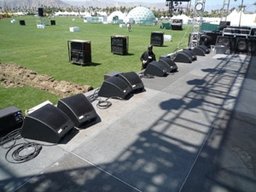 EAW MW12's
EAW MW12's
There are other options such as EAW, Meyer, and Yorkville for instance. These are all great brands you can research in order to get a good idea of price vs. quality.
**Just So You Know - I am not in any way affiliated with any companies mentioned. My selections on what the best gear is, is from direct personal experience with said items. I have nothing to gain by recommending any piece of gear, other than knowing you'll be getting stuff that works, and that you can rely on.
If at any time you are wondering what a particular technical term may mean on this site, please feel free to check out this audio glossary!
|
|


